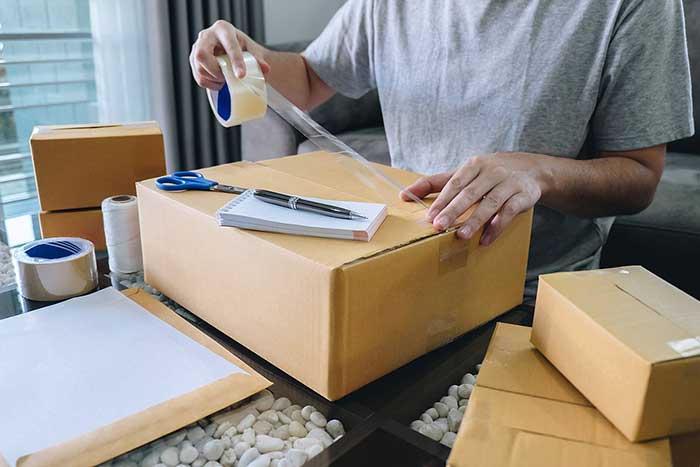In order for a business to successfully supply customers with goods, they will need to develop ways to mitigate packaging and product damage in transit. This can be difficult as many packages travel thousands of miles before they reach their destination.

Naturally, if all parcels were being delivered locally you could place them in a car or van and drive them to the customer yourself, ensuring they arrive in perfect condition. However, this isn’t practical or even feasible when you are dealing with a national or even international customer base.
You will need to rely on delivery services to transport your parcels and this is frequently when damage occurs.
Why Damage Is An Issue
If your products are damaged during transit then the customer receives an item that doesn’t work properly. That’s if they even accept the parcel. Once they have, and they find it doesn’t work, they will contact you for a replacement or a refund.
In the first instance, it means your customer will be waiting longer for the item they have paid for. In the second instance, your business reputation will be at stake.
Simply sending a parcel means that it’s impossible to say who caused the damage. That means you will need to replace the item in order to keep your customer happy. In doing so, you will be making yourself liable for the extra cost and effectively destroying any profit on the original sale.
You’ll also find it difficult to prove it was the transport service’s fault and reclaim any funds. As well as potentially damaging your reputation you can damage your finances and ultimately cause your business issues.
Mitigating The Product Damage
There are several things you can do to mitigate the damage in transit.
- Use Data Loggers
There are a number of great data loggers on the market. The best ones simply adhere to your parcel. You choose which one to use based on your requirements. For example, a temperature logger will monitor the temperature and the sticker will change color if it goers outside a pre-ordained range.
Equally, you can get data loggers that monitor force, weight on top of a box, or even if the parcel has been dropped or otherwise impacted.
You can add more than one data logger, simply choose the one or ones that are most relevant to your product.
Then, tell the courier company you are using them. If the sticker changes color during transit then your customer can refuse the item, allowing you to claim from the courier company as you can prove it was their mistake.
- Packaging
Of course, to help the data logger and the courier you should consider the packaging of your product. Ideally, the box around your item should be as snug a fit as possible. This will prevent the product from being able to move and potentially being damaged.
Any gaps in your box should be packed. You can choose from a wide array of materials to pack your box with. The key objective is to ensure the product is protected if it is impacted in any way.
- Stacking
You also need to spare a few moments to think about the size of your parcel and how many you are likely to send. If you can stack them neatly and easily then you’re off to a good start. It will reduce the likelihood of damage and make it easier for the delivery company to load and unload your products.
- The Courier Firm
It’s tempting to take the cheapest price on offer but this doesn’t mean you’ll get the best service. Keeping costs low usually comes at the price of staff levels, making it harder to keep an eye on the condition of parcels.
You need to take a look at all the companies offering transport services in your area and choose the one that will take the best care of your products. You can decide this by looking at the reputation of individual companies. It’s easy to verify on social media, with colleagues, and even by taking a look at online forums.
Don’t forget there will always be a few unhappy customers, it is very difficult for any company to get it right every time. But, if customers are generally happy it is worth trying the service they have.
Additional Thoughts
While getting the packaging right is important you also need to spend a day thinking about the heat and humidity that your parcel may be subjected to in transit. Cardboard can lose a significant amount of its strength in moist conditions and high temperatures can damage the product.
When you’re looking at mitigating packaging and product damage in transit you need to consider all the factors to ensure you choose the best service and most appropriate method of transport. It’s worth spending a little time researching this.
